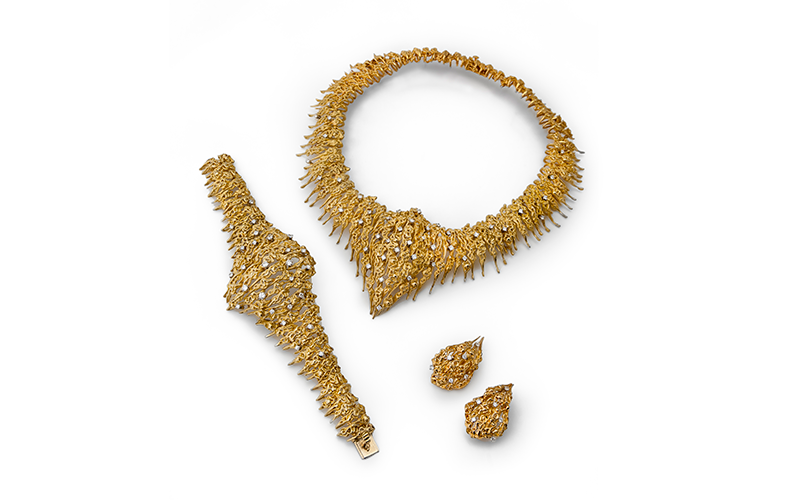- Events & Programs Home
- Calendar
- Accessibility
- Adults
-
Families & Teens
- Families & Teens Home
- 10x10 Teen Art Expo
- Art on the Rise
- Art Together: Art Making for Families with Children Ages 3–5
- Babies Sing with May Festival Minis
- Boy Scouts / Girl Scouts
- CAM Kids Day
- Family Storytime and Gallery Walk
- Family Studio: Art Making for Families with Children Ages 6–12
- Games in the Galleries
- Members-Only Baby Tours
- Public Baby Tours
- REC Reads
- Rosenthal Education Center (REC)
- Saturday Morning Art Class
- See Play Learn Kits
- Summer Camp
- Teen Fest: Zine and Comic Exchange
- RECreate
- Teachers
- Community Outreach
- Fundraisers
- Plan Your Own Event

- Events & Programs Home
- Calendar
- Accessibility
- Adults
-
Families & Teens
- Families & Teens Home
- 10x10 Teen Art Expo
- Art on the Rise
- Art Together: Art Making for Families with Children Ages 3–5
- Babies Sing with May Festival Minis
- Boy Scouts / Girl Scouts
- CAM Kids Day
- Family Storytime and Gallery Walk
- Family Studio: Art Making for Families with Children Ages 6–12
- Games in the Galleries
- Members-Only Baby Tours
- Public Baby Tours
- REC Reads
- Rosenthal Education Center (REC)
- Saturday Morning Art Class
- See Play Learn Kits
- Summer Camp
- Teen Fest: Zine and Comic Exchange
- RECreate
- Teachers
- Community Outreach
- Fundraisers
- Plan Your Own Event
Necklace, Bracelet, and Earrings by Sven Boltenstern
Necklace, Bracelet, and Earrings by Sven Boltenstern
- Home
- Plan Your Visit
- Art
-
Events & Programs
- Events & Programs Home
- Calendar
- Accessibility
- Adults
-
Families & Teens
- Families & Teens Home
- 10x10 Teen Art Expo
- Art on the Rise
- Art Together: Art Making for Families with Children Ages 3–5
- Babies Sing with May Festival Minis
- Boy Scouts / Girl Scouts
- CAM Kids Day
- Family Storytime and Gallery Walk
- Family Studio: Art Making for Families with Children Ages 6–12
- Games in the Galleries
- Members-Only Baby Tours
- Public Baby Tours
- REC Reads
- Rosenthal Education Center (REC)
- Saturday Morning Art Class
- See Play Learn Kits
- Summer Camp
- Teen Fest: Zine and Comic Exchange
- RECreate
- Teachers
- Community Outreach
- Fundraisers
- Plan Your Own Event
- Give & Join
- About
- Tickets
- Calendar
- Exhibitions
- Collections
- Blog
- Shop
- Art
- Exhibitions
- What, Me Worry? The Art and Humor of MAD Magazine
- Recall. Reframe. Respond. The Art of Paul Scott
- Rediscovered Treasures
- Special Features
- Upcoming Exhibitions
- Past Exhibitions
- Online Exhibitions
- Explore the Collection
- Provenance and Cultural Property
- Conservation
- Meet the Curators
- Digital Resources
- Art Bridges Cohort Program

Sven Boltenstern (Austrian, 1932–2019), Necklace, Bracelet, and Earrings, mid-1970s, gold, diamonds
Audio Description
This matching gold and diamond necklace, bracelet and earring set was made in the mid-1970s by Austrian jeweler Sven Boltenstern who lived from 1932–2019.
All the pieces in this set are made of yellow gold and are textured over their entire surface. The texture resembles rivulets of water made of squiggly lines of gold. The necklace and bracelet have a single strand of gold that protrude downward from the close-set texture. The necklace is narrow at the back and convex overall. It becomes wider as the shape moves toward the center front where it comes to a point and forms a triangle shape. The bracelet is similarly shaped with the triangular point at the center front. The clip-on earrings are rounded at the bottom, forming teardrop shapes. The whole set is randomly sprinkled with small, faceted diamonds.
Label Copy
This matching gold and diamond necklace, bracelet and earring set was made in the mid-1970s by Austrian jeweler Sven Boltenstern who lived from 1932–2019.
Sven Boltenstern was adamant that he was an artist. He wanted his work to be reviewed by art critics, not by society writers. A native of Vienna, he began his formal training as a goldsmith in the early 1950s, working in Paris and Austria, showing his pieces alongside the jewelry of established artists such as Georges Braque and Alexander Calder.
Boltenstern’s jewelry was regularly defined as sculpture to wear. Sources of inspiration were endless: the art of the Rococo and Biedermeier eras, the Jugendstil movement, and Egyptian art copied as a boy at the Louvre. But nature remained Boltenstern’s primary focus. This parure or set, consisting of a necklace, bracelet, and earrings, is evocative of liquid gold. The impulse might have come from seeing the delicate roots of a plant or rivulets of water. The rippled surface of the work conveys Boltenstern’s desire for his jewelry to be touched.
Back to Materials, Texture, Sculpture Back to the Audio Exhibition
Cincinnati, OH 45202
Toll Free: 1 (877) 472-4226
Museum Hours
Museum Shop
Terrace Café
Library
Cincinnati Art Museum is supported by the tens of thousands of people who give generously to the annual ArtsWave Campaign, the region's primary source for arts funding.

Free general admission to the Cincinnati Art Museum is made possible by a gift from the Rosenthal Family Foundation. Exhibition pricing may vary. Parking at the Cincinnati Art Museum is free.
Generous support for our extended Thursday hours is provided by Art Bridges Foundation’s Access for All program.

General operating support provided by:



